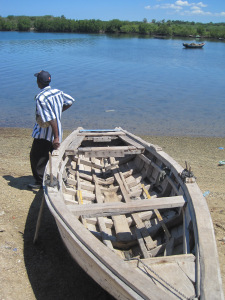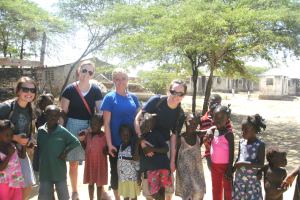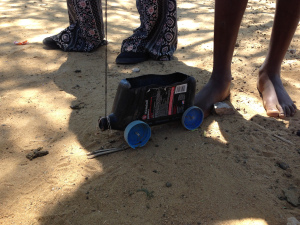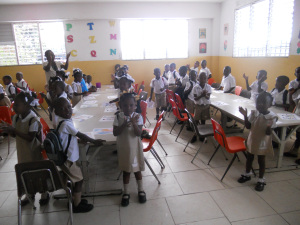Inspiration from a World Apart
By Elizabeth Nieves
Sitting on the plane of my first international flight, I tried to imagine the landscape that would greet me when I arrived and the new faces I would see, knowing that the next ten days would undoubtedly impact my life. The small group I was traveling with was bound for Haiti. As our flight landed in Santiago, Dominican Republic, our comrades on the plane cheered. We had arrived. The butterflies of not knowing what lied ahead set in.

After a short night in the DR, our bus driver taxied us through the vast, dry countryside until we reached the Haiti-Dominican Republic border. Luckily, when we arrived at the border, it was open, as we were later informed that the border is subject to be closed any time they please. Sitting in the bus, while our bus driver, Juan, took our passports to be processed was intense. Would we be granted access to cross into Haiti? As we waited, children crept up alongside the bus to beg for money or to try to sell us trinkets. When they were spotted knocking on our windows, the police shouted and chased them away.
After about twenty tense minutes, we were on our way across the country

lines. I most vividly remember looking out the window from my seat on the bus at the women who were washing their laundry and bathing their children in the river running along the border. What was a typical day for Haitians and Dominicans was a day full of new sensory experiences for me. In no time at all, we arrived at the school hosting us in Ouanaminthe, Haiti — a border town in the northeast region. The subsequent days were filled with completing projects around the school, playing with kids, visiting rural neighboring towns, spending time in elderly communities, eating squash soup, and a little sightseeing.

Less than six months after returning from Haiti, I found myself in a global food policy class at BU. For our midterm and final papers, we were tasked with selecting a country to research its nutrition situation, agriculture production, food security, and its progress on Millennium Development Goals (MDGs) and other food policies. As I thought about which country I would spend most of the semester researching, I thought back to all of the faces I met in Haiti: sweet Emilia from Le bon Samaritain (the Good Samaritan), the creative little boy who crafted a toy car out of a motor oil container and plastic caps, the fishermen along the vibrantly colored coast, and the children that sang to us as we colored with them in their classrooms.

Most of all, I thought about the hands I held for hours as we walked around the impoverished town of Dérac making house visits on a sweltering day with no trees in sight to take a rest in the shade. Many of these children did not have shoes, clothing, or food as evidenced by the swollen bellies around us. Several of them had beautiful red hair, which is quite out of the ordinary. I was later informed that the hair I found so uniquely beautiful was due to an ugly cause: severe malnutrition. It left me wondering why some people lived in such poverty while others were able to thrive in plenty. Thus, my questions of “Why is there such great poverty in Haiti?” and “How can the situation improve?” led to me researching Haiti for my global food policy class. Although Haiti has been impacted by many natural disasters and lacks resources, consequently leaving many people food insecure, the country is full of beauty and resilience.